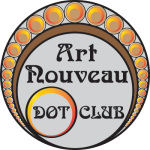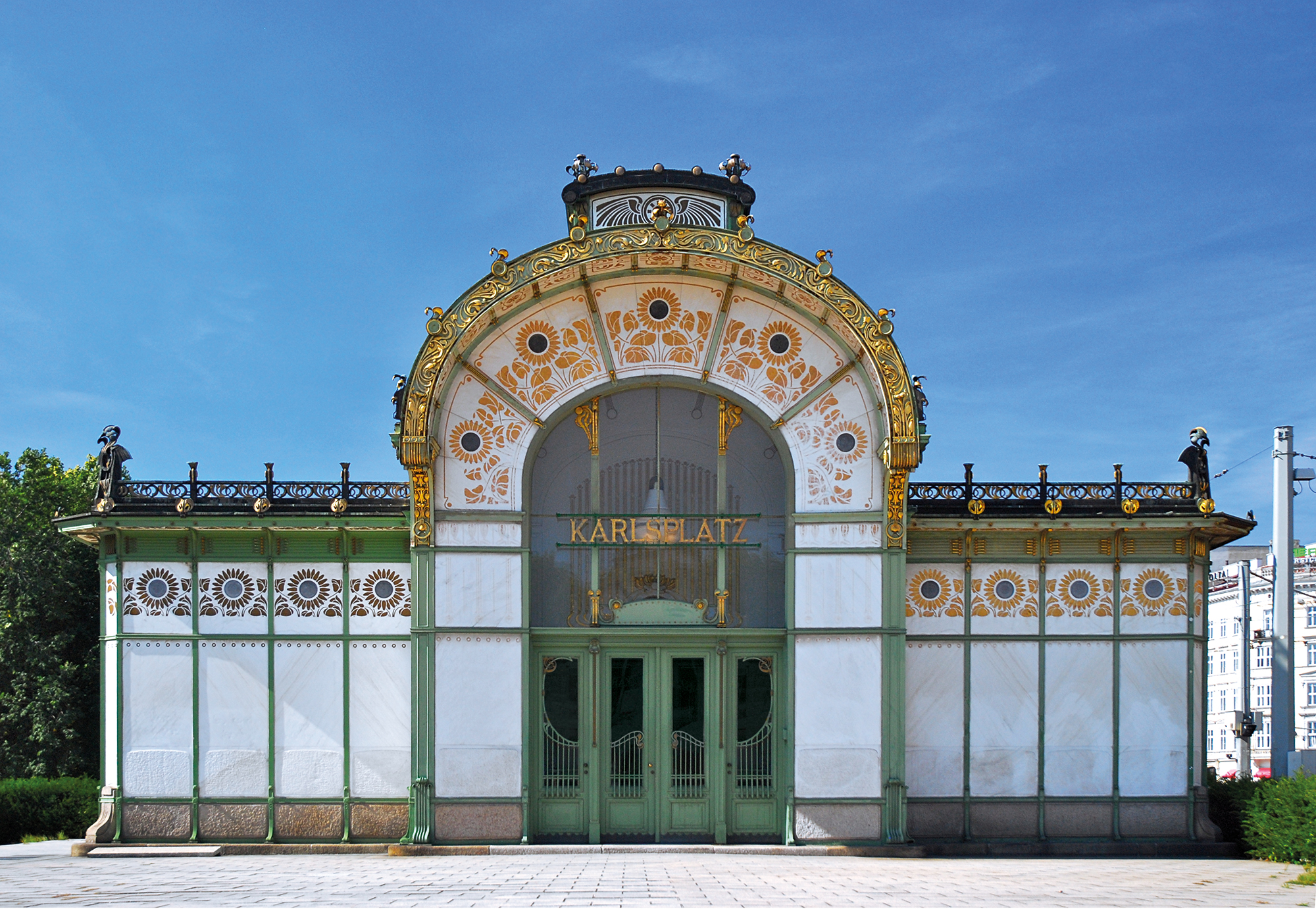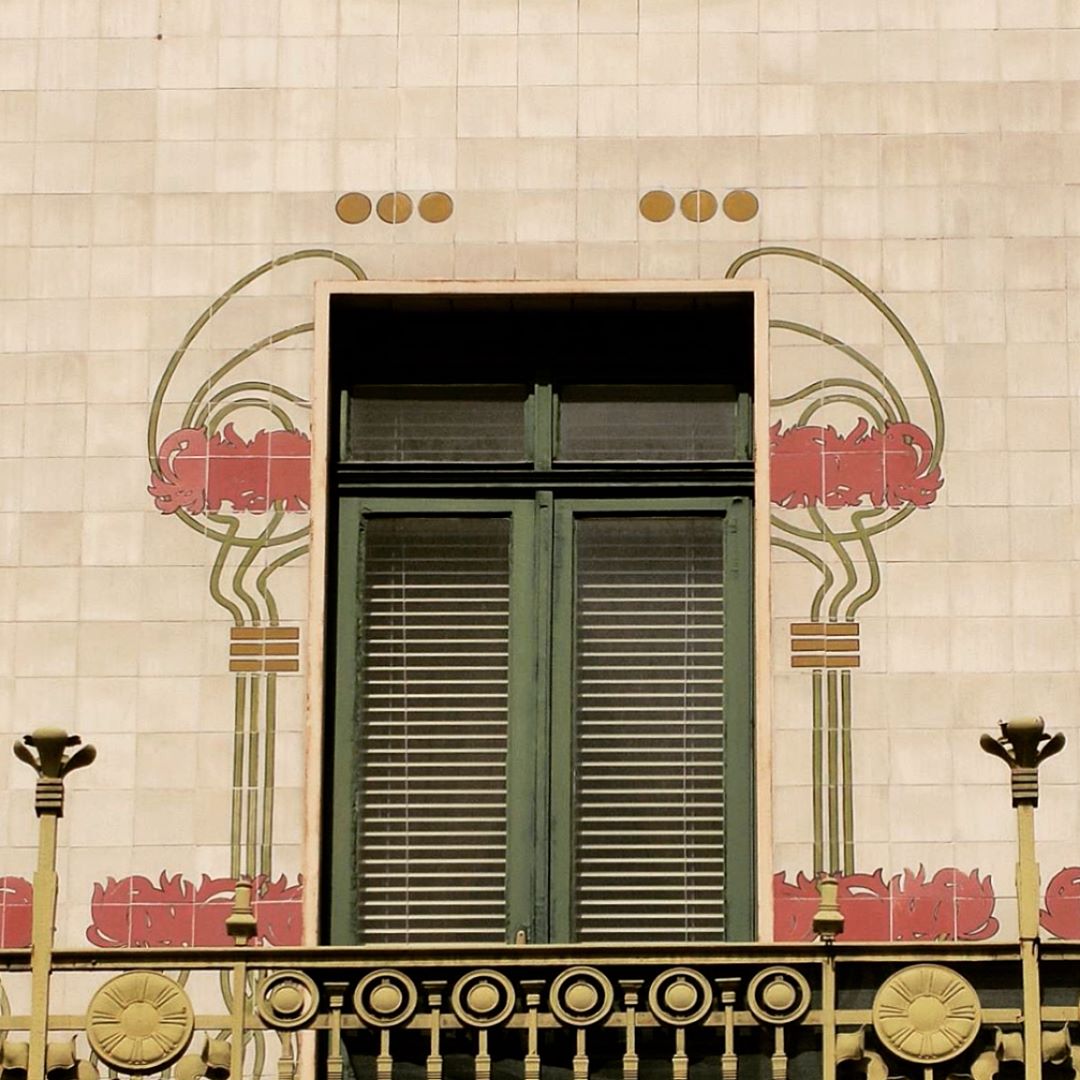Otto Wagner. The pioneer of Modern Urbanism (2.5h)
380 €
This two hour and a half private art nouveau experience is a thematic private tour about Otto Wagner in Vienna. At the turn of the 19th Century into the 20th, Vienna’s population was growing, and Otto Wagner was chosen to embrace this growth. An Art Nouveau focused private tour that will help you understand the importance of this man in the history of Vienna and the Secession movement.
He designed the growth of the city and draw up metro lines that were to connect the suburbs with the city center along the Ring. He was famous for giving materials and functionality a leading role in his work by contrast with the tendency of many urban planners and architects to privilege ornate decoration.
Our private tour gives you a detailed look at the architectural legacy of Otto Wagner in Vienna. In this tour learn about the design elements, political and aesthetic philosophy of the elegant turn-of-century style. Understand the history behind the movement that rejected Austria’s imperial past.
This private, special theme tour is suitable for those who would like to immerse in the atmosphere of Vienna 1900, and understand how Otto Wagner helped to transform it.
To book this Art Nouveau experience start by selecting the group size, the date of your tour on the calendar available below and after the time you want your tour to start. Reserve early to guarantee availability.
Departure time: 9am, 9.30am or 10am. Other options on request.
Price: 1 – 8 PAX = 380€.
For other departure times or group size, or any customization to your experience, please Contact Us by email. You can also WhatsApp/Call us at +34 667 823 001
Description
Itinerary
On this complete 2.5-hour private tour we will be pleased to show you the major works in Vienna of Otto Wagner, the master of Art Nouveau who is considered The Pioneer of Modern Urbanism.
As in many European cities at the time, the old fortifications around the medieval city center of Vienna were no longer required, and pressures for redevelopment were huge. These old fortifications of the feudal era were replaced with institutions of the new bourgeois power: University, Parliament, Museums, etc.), as well as upscale blocks of houses.
The main highlights visited during the tour will be:
- Danube Locks
- Postsparkasse
- Wienfluss Embankment
- Karlsplatz Underground Stations (Otto Wagner Museum)
- Otto Wagner Houses Wienzeile
All this works will help you understand the figure and work of Otto Wagner. From them all, some consider that Wagner’s masterpiece of the time was the Postal Savings Bank – Postsparkasse (1904-1906), a work characterized by linearity, smoothness, and crispness of design. The external walls were covered by marble revetments held in place by exposed aluminum fastenings. The interior, equally striking in its lightness and in the elegant use of exposed metal and glass, can only be visited during weekdays.
The main focus of our tour are on the best works of Otto Wagner in Vienna. This private tour include lots of references to history, architecture, decorative, cultural art, literature and music of the fin de siècle.
This private tour will be a journey back in time to Vienna’s Secession times and will help you understand the Otto Wagner’s importance within Art Nouveau and Modern Urbanism.
Availability
The Museum of Karlsplatz Underground Stations (Otto Wagner Museum) is closed on Mondays, so we won’t perform the tour this day of the week. This Art Nouveau private tour will take place from Tuesday to Sunday.
Please note that the opening hours of some buildings will influence the content of the tour but be ware that Postsparkasse is closed on weekends. The big cash hall (Großer Kassensaal) will be open for the public apart from private events.
To book this tour please click on the calendar below. Book this tour at least one week in advance.
Pickup & Drop Off
Starting point is in front of the McDonald’s in Rotenturmstrasse near Schwedenplatz (Vienna 1010).
We will end the tour in Otto Wagner Houses Wienzeile.
Inclusions
Professional fully licensed private guide.
This is a walking private tour and it is not required the use of public transport.
Please note that the opening hours of some buildings, and your group interests, will influence the order and content of the tour.
Exclusions
Food and Drinks.
Fees museum tickets (prices may change over time, so check links provided below for current prices):
Otto Wagner
Otto Wagner was born near Vienna, in the city of Penzing in 1841. He studied at the Viennese Technische Hochschule, at the Berlin Bauakademie and at the Academy of Fine Arts.
He designed a new plan for the city of Vienna in 1890 which included a urban railway network, maintaining the classic urban monumentality of its beginnings but adopting a modern and functional construction. The various railway station buildings exhibited a decorative style very close to the Viennese Secession School to which the architect belonged at the time.
In 1894 he was professor and supervisor at a special school of architecture within the Academy of Fine Arts.His told students to learn and develop an architecture based exclusively on the new materials and modern construction methods.
Throughout he exerted a great influence on younger architects such as Adolf Loos or J.M. Olbrich and from 1898 he began the stylistic renewal that was a shock in his country and all over Europe.
In his last works he dispensed with almost all the adornments and used simple materials and forms, as in the Church of Saint Leopold in Steinhof, or the Post Office Savings Bank in Vienna, showing a simple but effective mix of plane, space and elements.
Otto Wagner died in 1918 in Vienna.
Art Nouveau in Vienna
Vienna had a higher density of conservative nobility than Budapest, the other co-capital of the Austrian-Hungarian Empire, and this fact delayed the entrance of this new artistic movement in Vienna. It was not until 1896 that the painter Gustav Klimt and a number of other artists quit the conservative Künstlerhaus and founded a new art association called Secession, a name used by a popular building completed in 1898 and used by many of the members of this movement, artists like Otto Wagner or Josef Hoffman.
This private, special theme tour is suitable for those who would like to immerse in the atmosphere of Vienna 1900, when it was the cultural capital of Europe, like Florence was around 1500. In the year 1900 the City of Music was the seventh largest city in the world. Nowadays the Austrian capital is not in the the list of the “100 largest cities in the world”.
If you feel that this private tour can be of interest to your friends share it with them in your social networks:








